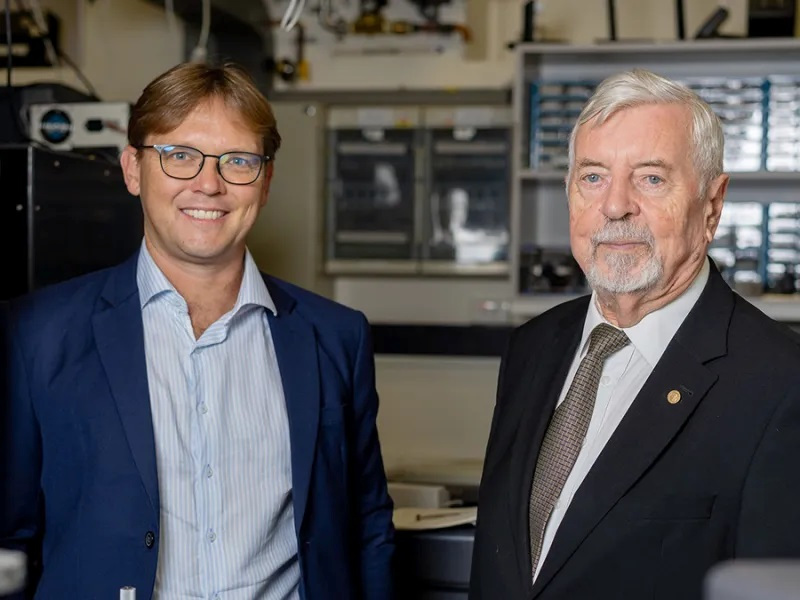 Dr Warren McKenzie (l.) and Professor Heinrich Hora (r.)
Dr Warren McKenzie (l.) and Professor Heinrich Hora (r.)
Australian fusion start-up HB11 Energy has reported demonstrating non-thermal fusion of hydrogen and boron-11 using high power lasers.
The findings, claimed as a world first, also reveal the production of ten times more fusion reactions than expected based on earlier experiments at the same facility.
As such, the results, which have been published in the journal ‘Applied Sciences’, add weight to the potential viability of the technique as an alternative to the high temperature deuterium-tritium fusion approach that has dominated fusion research.
“The demonstration of fusion reactions alone is incredibly exciting. But on top of this, the unexpectedly high number of reactions additionally gives us important information about how to optimise our technology to further increase the fusion energy we can create,” says Dr Warren McKenzie, co-founder and MD of HB11 Energy.
“These findings take us one step closer to creating clean, safe, and reliable energy at better prices and in greater abundance than all the existing renewable energy sources combined.”
The hydrogen-boron fusion approach was predicted in the 1970s by the German physicist Professor Heinrich Hora at the University of New South Wales but only began to be considered practical a decade later with the demonstration of ‘chirped pulse amplification’ for boosting the power of laser pulses by several orders of magnitude up to the necessary levels.
Subsequent experimentation led in 2019 to the awarding of the first patent for laser boron fusion and the founding of HB11 Energy, of which Hora, a co-founder, remains a director.
For nuclear fusion to have commercial applications, it must create a net energy gain whereby the energy output of a reaction significantly exceeds the energy input required to catalyse it.
HB11 Energy reports its hydrogen-boron energy technology as now four orders of magnitude away from achieving net energy gain when catalysed by a laser and many orders of magnitude higher than those reported by any other fusion company.
The experiment was performed at the LFEX petawatt laser facility at Osaka University in Japan due to a lack of a local high-power laser facility in Australia.
Laser fusion developers
HB11 Energy is not alone in pursuing laser powered fusion. The German start-up Marvel Energy with the support of Siemens among other industry leaders is another that is developing a hydrogen-boron fusion approach.
The Lawrence Livermore National Laboratory in the US also is researching laser driven fusion, using partially frozen hydrogen isotopes as the target.
With its latest findings HB11 Energy considers itself the global frontrunner in the race to commercialise fusion energy and also has commenced a new Series A funding round.
Meanwhile work is ongoing on all aspects of the process, from the laser requirements to the reactor and the fuel construction and characteristics in order to achieve the highest gain fusion reactions.
